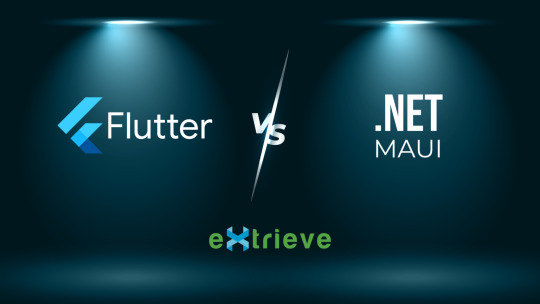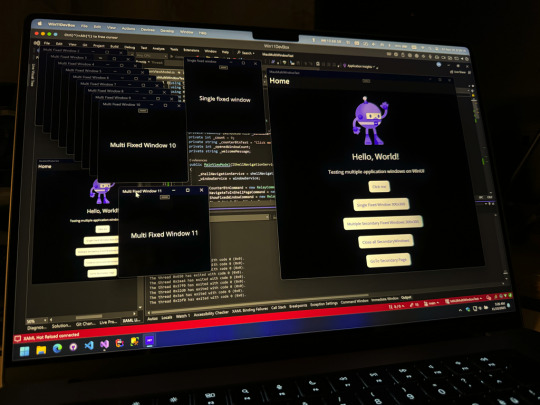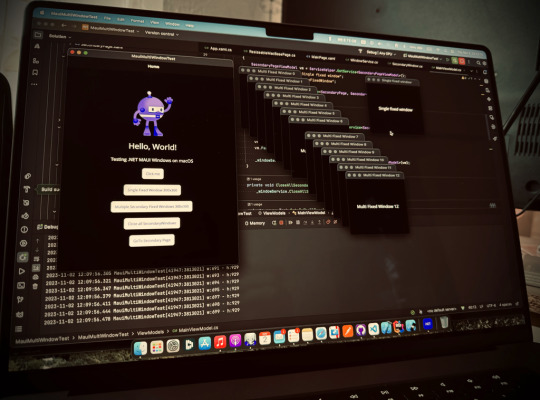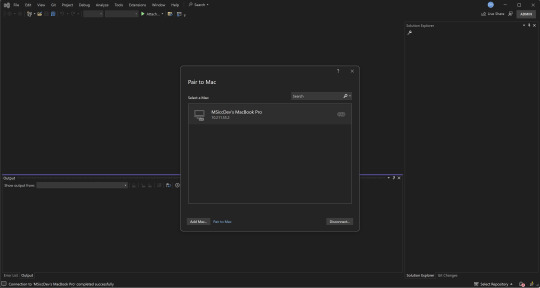#DotNetMAUI
Explore tagged Tumblr posts
Text
Find the Top 5 Latest Mobile App Development Software in 2025 — Expert Picks by TimD — Tim Digital
Choosing the right mobile app development software in 2025 is more than just a technical decision — it’s a strategic advantage. With the growing pressure to deliver faster, reduce bugs, and maintain UI consistency across devices, developers and companies alike are re-evaluating their tech stacks.

Why the Right Mobile Development Stack Makes All the Difference
Many development teams struggle not because of a lack of skill but due to poor tooling and platform fragmentation. Common issues include:
Too much time spent on duplicate codebases
Difficulty managing bugs across platforms
Low design consistency between iOS and Android versions
A better stack can lead to faster time-to-market, fewer bugs, and improved collaboration across teams.
Snapshot: 5 Game-Changing Mobile Development Frameworks
In 2025, five standout mobile development frameworks are leading the way.
Flutter, backed by Google, offers hot reload, expressive visuals, and UI consistency — making it ideal for cross-platform UI precision. React Native, developed by Meta, is JS/TS-based and features fast refresh and a robust plugin ecosystem, best suited for teams transitioning from web to mobile. .NET MAUI, Microsoft’s enterprise-grade solution, combines native speed with C# and deep integration into the Microsoft ecosystem, perfect for unified experiences across mobile and desktop. For Apple-centric development, Swift stands out with hardware-level API access and deep iOS integration, delivering high-performance, iOS-only applications. Lastly, Kotlin, Google’s preferred language for Android, is known for its concise syntax and Jetpack Compose support, making it the go-to choice for scalable, Android-first projects.
1. Flutter — Deliver Visually Consistent Cross-Platform Apps
Backed by Google, Flutter continues to lead the way for teams needing high-performance mobile apps from a single Dart codebase. With its built-in Skia rendering engine, it doesn’t rely on native UI components — giving you full control over visuals on both Android and iOS.
Why It’s a Top Pick:
Rapid UI iteration with Hot Reload
Mature ecosystem on pub.dev
Excellent for MVPs, startups, and custom-designed apps
2. React Native — A Natural Fit for Web Development Teams
Created by Meta, React Native allows JavaScript developers to build native mobile apps without switching tech stacks. It’s ideal for web teams transitioning into mobile, especially with tools like Expo simplifying builds.
Best Use Cases:
Fast deployment using React-based components
Shared codebase between web and mobile
Lightweight apps needing high iteration cycles
3. .NET MAUI — Microsoft’s Unified Solution for Desktop and Mobile
.NET MAUI enables enterprise-grade cross-platform development using C# and XAML. It compiles to native code, ensuring performance, while simplifying development for organizations already using Microsoft tools and Azure.
Why Enterprises Prefer It:
Strong support for desktop/mobile hybrid builds
Full access to native APIs
Streamlined with Visual Studio and Azure DevOps
4. Swift — The Gold Standard for Native iOS App Development
Developed by Apple, Swift is the go-to for building fluid, fast, and fully integrated iOS apps. Combined with SwiftUI or UIKit, it’s the most reliable way to deliver App Store-ready applications with deep device capabilities.
Ideal For:
iOS-only apps
Products that leverage ARKit, Core ML, or HealthKit
Premium apps requiring pixel-perfect animations
5. Kotlin — For Next-Level Native Android Performance
Endorsed by Google and developed by JetBrains, Kotlin is a modern language designed for Android. It brings null safety, concise syntax, and coroutine-based async capabilities, making it a favorite among Android developers in 2025.
Where It Shines:
Clean migration path from Java
Jetpack Compose support for UI innovation
Great for complex, scalable Android apps
Native vs. Cross-Platform vs. Hybrid — What Should You Choose?
When it comes to choosing the right development approach, your decision should align with your product roadmap, team capabilities, and performance expectations. Native development offers the best UX quality and strong scalability, making it ideal for performance-intensive apps — but it comes with higher maintenance needs and moderate development speed. Cross-platform frameworks like Flutter and React Native strike a balance by allowing faster development, lower maintenance, and good scalability, although UX quality may slightly lag behind native builds. On the other hand, hybrid frameworks such as Ionic are fast to develop and easy to maintain but offer limited user experience and only moderate scalability — making them suitable for basic MVPs or internal tools where performance is not critical.
Expert Tip: If your app relies on camera, AR, or sensors — go native. For time-to-market and design parity, cross-platform tools like Flutter or React Native offer the best ROI.
What to Look for in Mobile App Development Platforms
When selecting mobile development tools in 2025, top agencies and development teams recommend looking for:
Real-time debugging and emulation support
Comprehensive UI libraries
CI/CD compatibility (e.g., App Center, GitHub Actions)
Easy deployment to Play Store and App Store
Third-party plugin support for maps, payments, authentication, etc.
Final Thoughts
Whether you’re launching a feature-rich Android app, building an enterprise mobile suite, or rapidly shipping a cross-platform MVP — choosing the right development platform in 2025 is key to avoiding unnecessary rework and scaling with confidence.
If you’re looking for expert guidance, several agencies — like TimD — Tim Digital — are offering tailored consulting and mobile app solutions built on the most robust tools in the market.
👉 Looking for the Best Mobile Apps Development Services in Kolkata? Explore trusted mobile development experts who can help architect your next big idea, fast and friction-free.
Follow us for insights and expert strategies on LinkedIn, Facebook, Instagram, YouTube, Pinterest, and Twitter (X).
#MobileAppDevelopment#AppDevelopmentTools#CrossPlatformDevelopment#FlutterDevelopment#SwiftProgramming#KotlinAndroid#DotNetMAUI#iOSDevelopment#AndroidDevelopment#TechStack2025#TimDigital#TimDTech#SoftwareDevelopment
0 notes
Text
Secure Your .NET MAUI Apps with Confidence!
Are you building cross-platform apps with .NET MAUI? Then robust JWT authentication isn't optional—it's essential. In our latest blog, we break down how to implement secure JWT authentication in .NET MAUI step by step. From token generation to validation and best practices, we've covered it all to help you build more secure, scalable, and modern applications.
Learn the implementation process
Avoid common security pitfalls
Apply real-world code examples
Read the full blog here: https://lnkd.in/dvyaQBZd
Need expert help with web or mobile app development?
Contact us today - we're just one message away from solving your next big tech challenge.
[email protected] www.prishusoft.com

0 notes
Text
Mastering .NET MAUI: Best Practices for High-Performance Applications

Developing cross-platform applications with .NET MAUI requires a strategic approach to ensure optimal performance, scalability, and maintainability. By following industry best practices, developers can build efficient, user-friendly applications that deliver a seamless experience across multiple platforms. Read More
1 note
·
View note
Text
.NET MAUI vs Flutter vs React Native: A Detailed Comparison for 2025

Frameworks like .NET MAUI vs Flutter vs React Native have made it easier than ever to create cross-platform apps. These technologies allow developers to write a single codebase and deploy it across several platforms, saving them time and money.
However, each framework has its strengths and weaknesses, making it essential to choose the right one for your project. Read more
1 note
·
View note
Text
0 notes
Text
Unlock the Future of Cross-Platform Development with .NET MAUI
Looking to build high-performance apps that work seamlessly across Android, iOS, Windows, and macOS? With Virtual Coders’ expert .NET MAUI Development Services, you can achieve just that!
✅ Custom, cross-platform solutions ✅ Seamless performance across all devices ✅ Exceptional user experience ✅ Leverage one codebase for multiple platforms
Whether you’re a startup or an established business, we help you create apps that stand out and deliver results! Ready to scale your business? Let's connect today! 🔗

#DotNetMAUI#Cross Platform Development#App Development#Mobile Development#Tech Innovation#Cross Platform Apps
0 notes
Text
Cross-Platform Mobile Development: .NET MAUI vs. Flutter

Exploring the battle of mobile development giants: .NET MAUI vs. Flutter. Dive into the battle of frameworks: .NET MAUI vs. Flutter. Discover the pros and cons, performance benchmarks, and real-world use cases. Whether you're a developer or tech enthusiast, this showdown will reshape your perspective on mobile app development. #DotNETMAUI #Flutter
#Flutter #DotNETMAUI #CrossPlatform #TechWars #ExtrieveTechnologies #Extrieve
0 notes
Text
Dealing with application windows on Windows with .NET MAUI
I just published a follow-up blog post on how to handle application windows on Windows with .NET MAUI. #dotNET #dotNETMAUI #csharp #programming #MAUI #WinUI #Windows
As we have done the work for macOS, we can turn our attention now to the Windows operating system. Spoiler: this post will be far shorter than the last one. Recap Dealing with application windows on macOS with .NET MAUI In my last post, I showed you how to support multiple windows and handle their size. I introduced you the IWindowService to handle windows in an MVVM friendly way and told you…

View On WordPress
2 notes
·
View notes
Video
youtube
.NET MAUI | Resource Kullanımı
0 notes
Text
Learn how to build cross-platform apps with.NET MAUI by James Montemagno — Devstoc.
Let us go on a journey together to create beautiful native cross-platform apps for iOS, Android, macOS and Windows using .NET MAUI.

https://devstoc.medium.com/learn-how-to-build-cross-platform-apps-with-net-maui-devstoc-e6ba2bdbb883
1 note
·
View note
Text
Book review: The MVVM pattern in .NET MAUI
I just blogged: Book review: The MVVM pattern in .NET MAUI #MVVM #dotNET #dotNETMAUI #Learn #Read #Book #Books #Reference
The book is split into three parts. The first one covers the basics of MVVM and .NET MAUI, while the second one goes hands on a full recipe app sample. The third part goes even deeper into specific topics every .NET MAUI developer should know about. Part 1: Explaining MVVM and .NET MAUI In the first part, the book covers what MVVM is with the help of easy understandable samples that make it…
0 notes
Video
youtube
.NET MAUI | Platform Özelliklerine Erişmek
0 notes
Text
Handling lifecycle events on iOS and MacCatalyst with .NET MAUI
I just blogged: Handling #lifecycle events on #iOS and #MacCatalyst with .NET #MAUI #dotNET #dotNETMAUI #iOSDev #macDev #programming #CSharp #mobileDev #DesktopDev
My current side project is running on iOS and MacCatalyst. Even if both of them are able to share a lot of code, there are some challenges that you should be aware of if you’re going down this route. One of these challenging areas is the handling of the lifecycle events. Read the docs first Before you continue to read this post, I recommend reading the MAUI documentation about the app lifecycle…
#.NET MAUI#app#appearance#Apple#application#endif#Events#if#iOS#iosdev#lifecycle#MacCatalyst#macdev#macOS#Scene#Traits#UIWindowSceneDelegate#WindowSceneDidUpdateCoordinateSpace
0 notes
Text
A deeper look into menu bar handling in MacCatalyst apps with .NET MAUI
I just published a new #blog post! I am going to show you how to handle the menu bar in #MacCatalyst apps with #dotNET #MAUI in an #MVVM-friendly way. #dotNETMAUI #macOS #desktop #cssharp #programming
My current side project TimeTraverseHub has entered the stage where I need to add some global menus that are available everywhere in the app. Being a .NET MAUI app, I tried the naive approach first and followed the documentation from Microsoft. I was able to quickly add items to the application’s menu bar, but discovered the edges pretty fast. So I went out to learn more about how the menu…

View On WordPress
#.NET MAUI#Desktop#endif#if#macOS#MAUI#menu#MenuBar#MenuBarFlyoutItem#MenuBarFlyoutSubItem#MenuBarItem#mvvm#UIMenu#UIMenuBuilder#UIMenuIdentifier#UIMenuSystem
0 notes
Text
Dealing with application windows on macOS with .NET MAUI
I just published a blog post on how to deal with application windows on macOS with .NET MAUI #dotNET #MAUI #dotNETMAUI #csharp #macOS #MacCatalyst #programming #MVVM
As I posted already on my Mastodon feed, I recently had to deal with application windows for one of my side projects. It all started because I needed a secondary window of fixed size that can be opened with different items of the same type, providing the same options to all of them. Let’s have a look what this post will cover: Supporting multiple application windows Handling the size of…

View On WordPress
0 notes
Text
Prepare your Mac to be a Xamarin/.NET MAUI build host without VS4MAC
I just blogged: Prepare your Mac to be a Xamarin/.NET MAUI build host without VS4MAC #VisualStudio #VS4Mac #Xamarin #XamarinForms #dotNET #dotNETMAUI #MAUI #macOS #iOS #iOSDev #IDE #Build #host
Overview You can connect to a Mac Build host from your Windows machine without Visual Studio for Mac installed. All you need is to install the right packages, which are (luckily and for the time being), available to be downloaded separately. You just need to select the right versions that match your Visual Studio installation on Windows. Install .NET Of course, the first step is to install the…

View On WordPress
0 notes